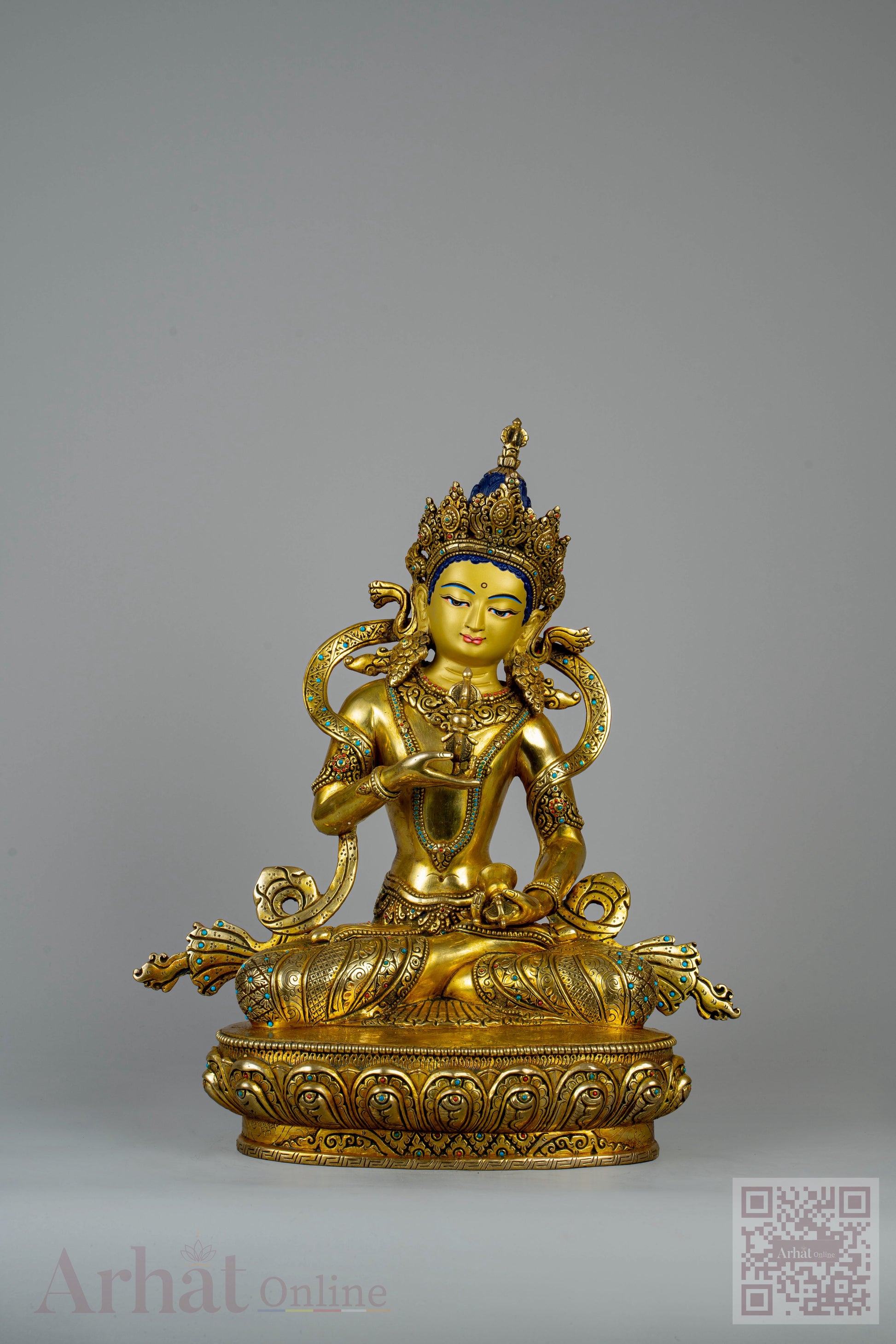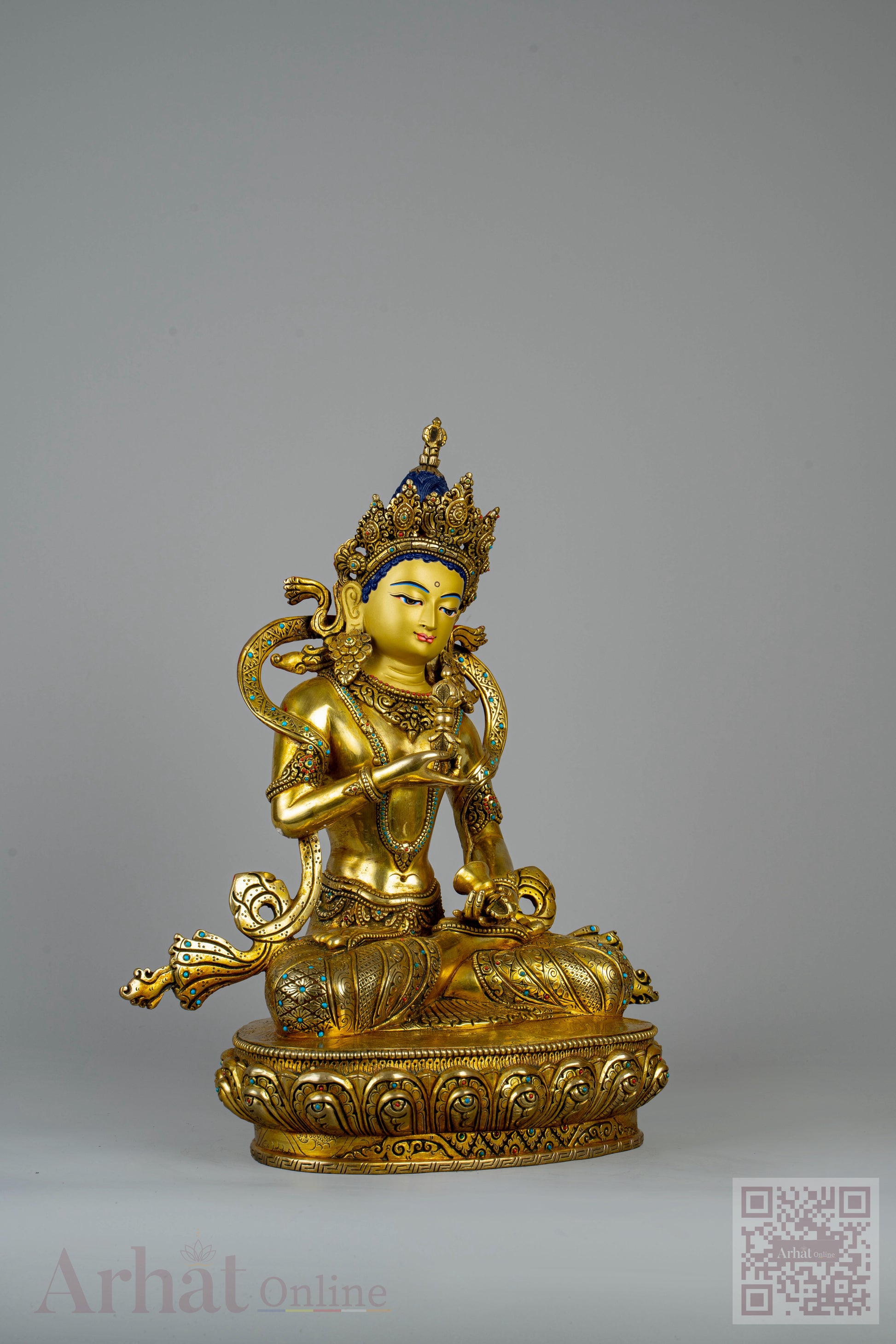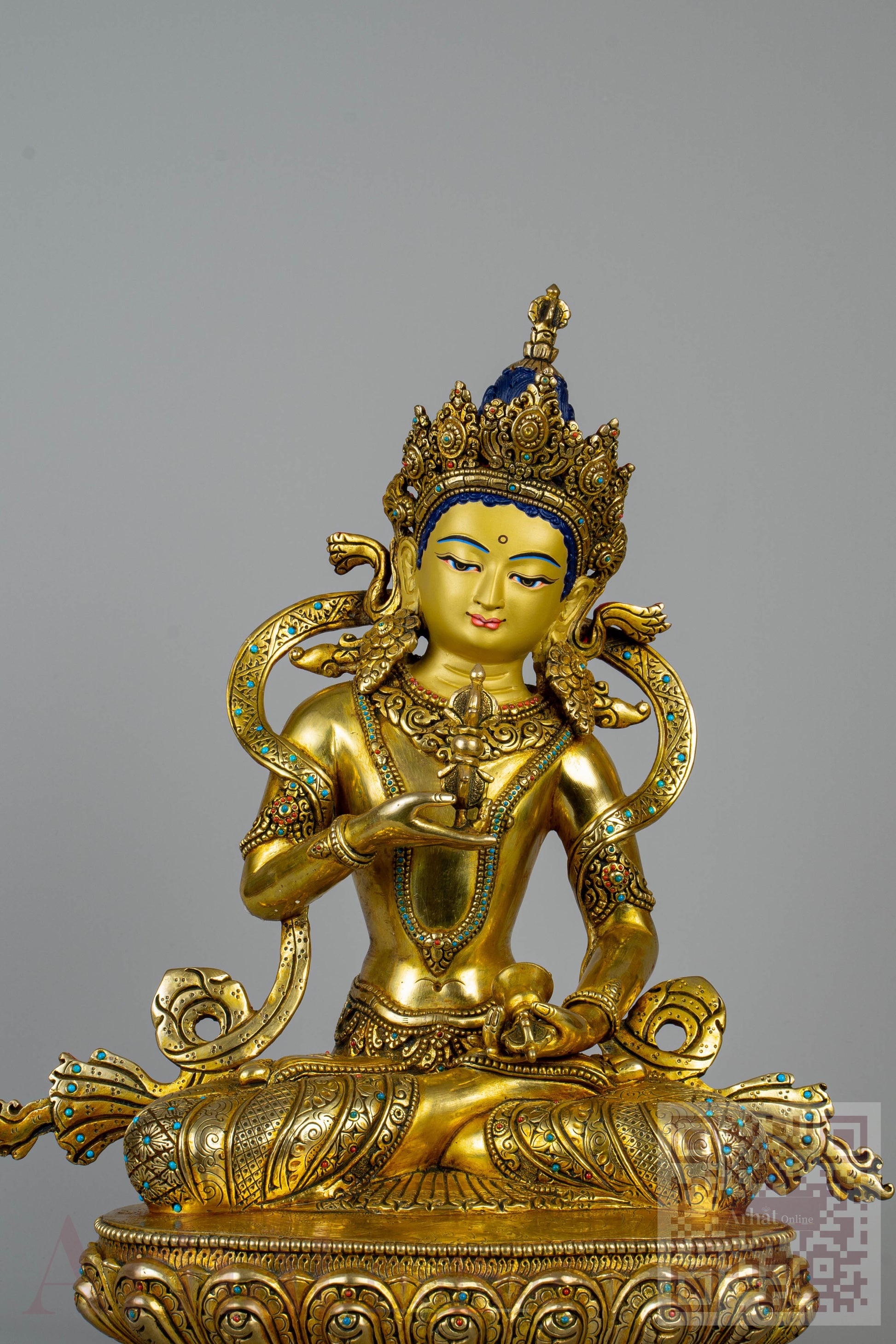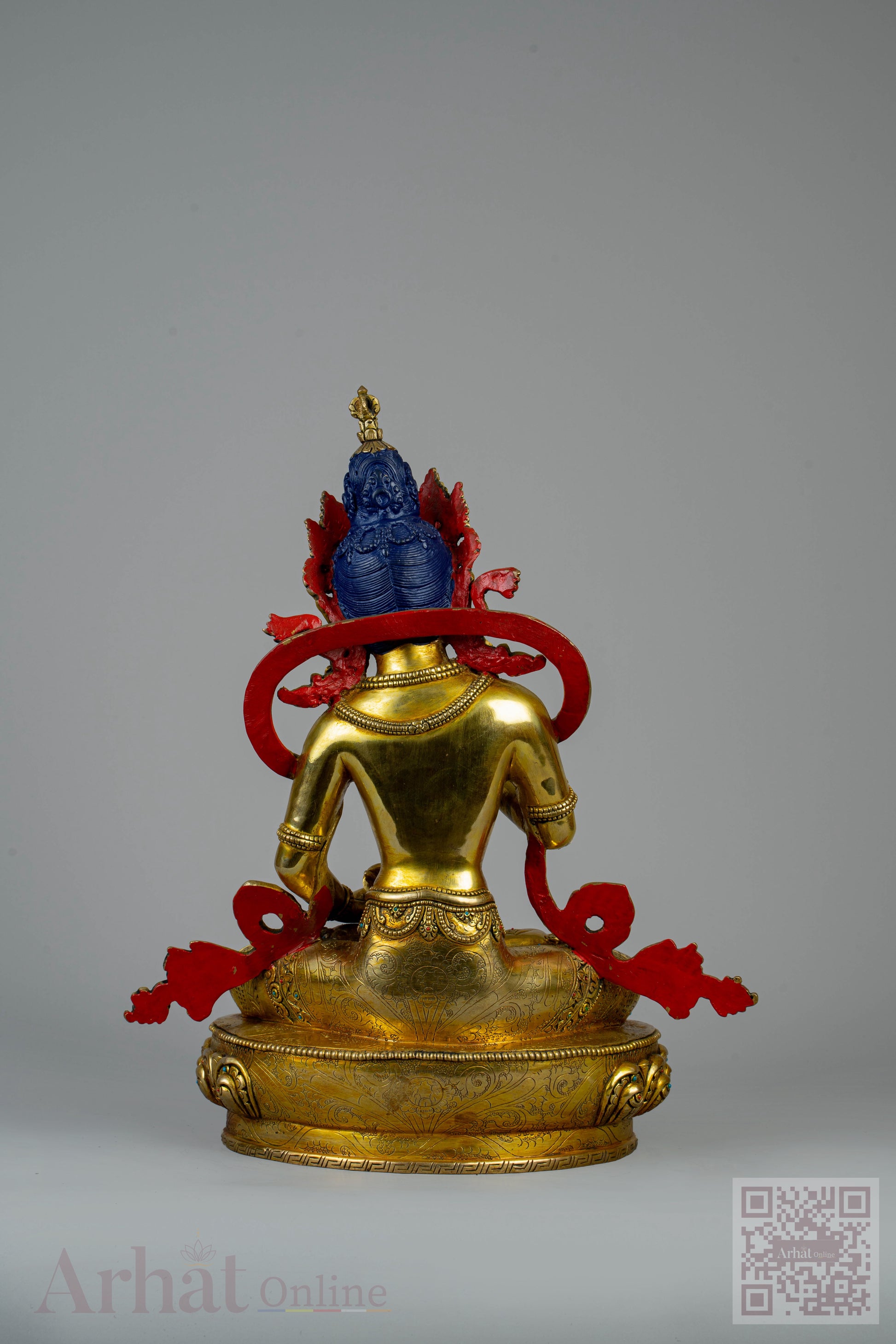Black Kubeyra Handicraft
14 inch/ 36 cm Vajrasattva | རྡོ་རྗེ་སེམས་དཔའ། | 金剛薩埵菩薩
14 inch/ 36 cm Vajrasattva | རྡོ་རྗེ་སེམས་དཔའ། | 金剛薩埵菩薩
Couldn't load pickup availability
Introducing our exquisite Vajrasattva Statue, a stunning embodiment of spiritual grace and artistic craftsmanship. Standing 14 inches tall and weighing 4.6 kg, this magnificent statue is hand-crafted in the historic city of Patan, Nepal, renowned for its rich tradition of metalwork and sculpture.
Made from copper as the base metal, this sacred statue is meticulously plated with gold, adding a touch of divine brilliance to its aesthetic. The face is adorned with fine gold dust and acrylic paint, ensuring a level of detail that captures the serene and compassionate essence of Vajrasattva.
Vajrasattva, a revered figure in the Buddhist tradition, is associated with purification and the removal of obstacles. The intricate iconography of this deity is symbolized by the vajra (diamond thunderbolt) held in one hand, representing indestructibility, and a bell held in the other, symbolizing wisdom. The deity's peaceful countenance and elegant posture convey a sense of inner calm and spiritual purity.
This Vajrasattva Statue serves as a profound spiritual focal point and a testament to the skilled craftsmanship of the artisans in Patan, Nepal. Elevate your sacred space with this embodiment of divine artistry and the enduring spirit of Vajrasattva.
Dimensions
Dimensions
x x
Materials
Materials
Shipping & Returns
Shipping & Returns
Delivery
We are pleased to offer free shipping on all orders. Based on availability, with assurance of a dependable service, we utilize UPS, DHL or FedEx for our standard courier deliveries, which generally arrive within 6-12 business days. Please rest assured that all items are fully insured during transit, providing you with reassurance throughout the process.
Return Policy
We kindly accept returns within 14 business days, and we encourage you to explore our Returns page or reach out to our customer service team for assistance in navigating this process. Your satisfaction is very important to us, and we are committed to ensuring a positive experience for you.
Care Instructions
Care Instructions
Use a clean, dry brush: Maintain the pristine condition of your item by strictly using a clean, dry brush for dust removal. This is especially important for painted surfaces, such as gold accents.
Avoid touching with wet, sweaty, or dirty hands: Preserve the optimal appearance of your piece by never touching painted surfaces with wet, sweaty, or dirty hands.
Spot Cleaning Tips: For any spots, use a clean eraser and apply it gently. However, success is not guaranteed, so prevention is crucial to avoid stains on painted surfaces.
Not recommended for outdoor display: To ensure longevity, keep your piece indoors and do not display it outdoors. This will help preserve its quality and appearance for lasting beauty.
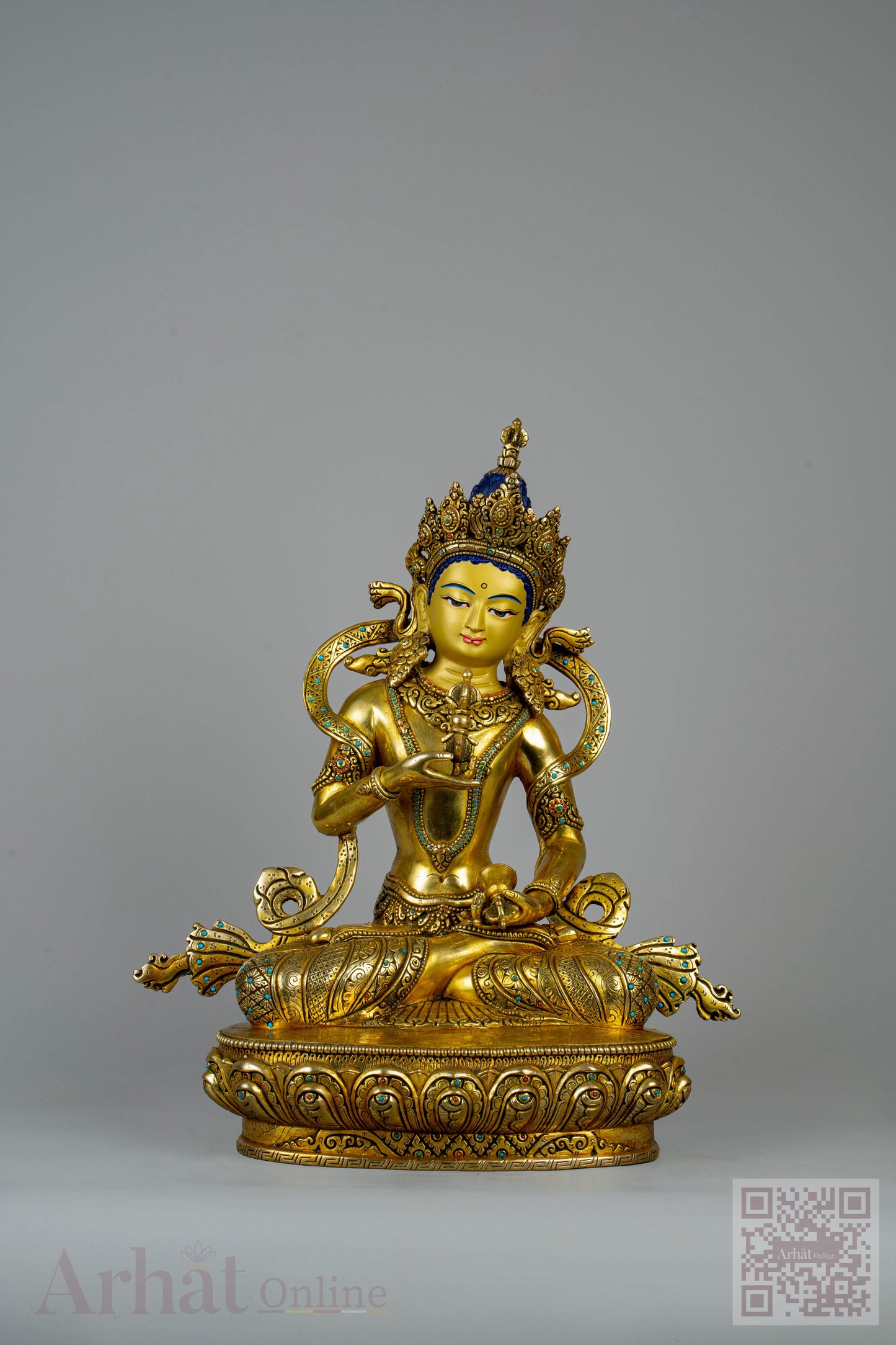
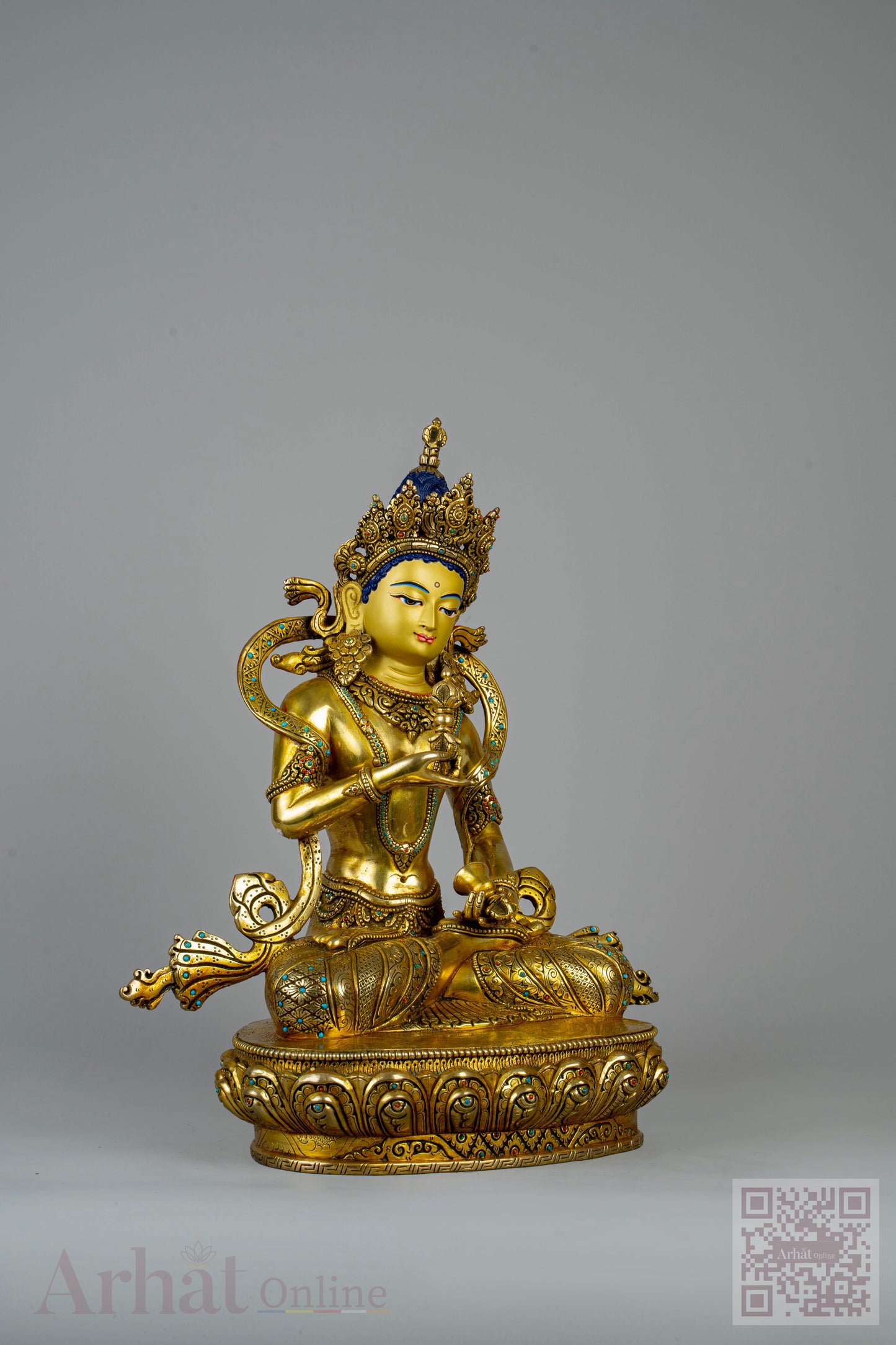
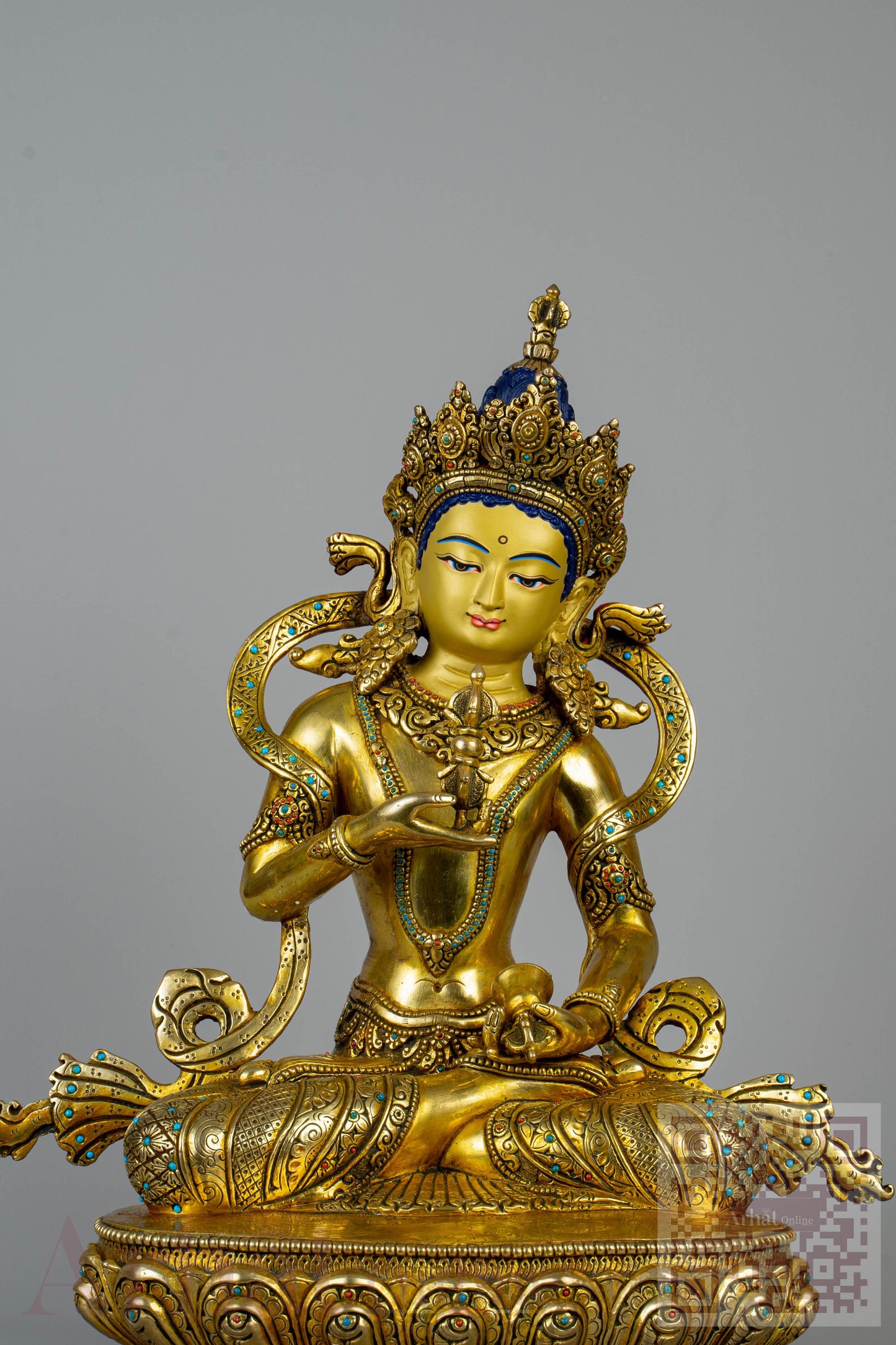
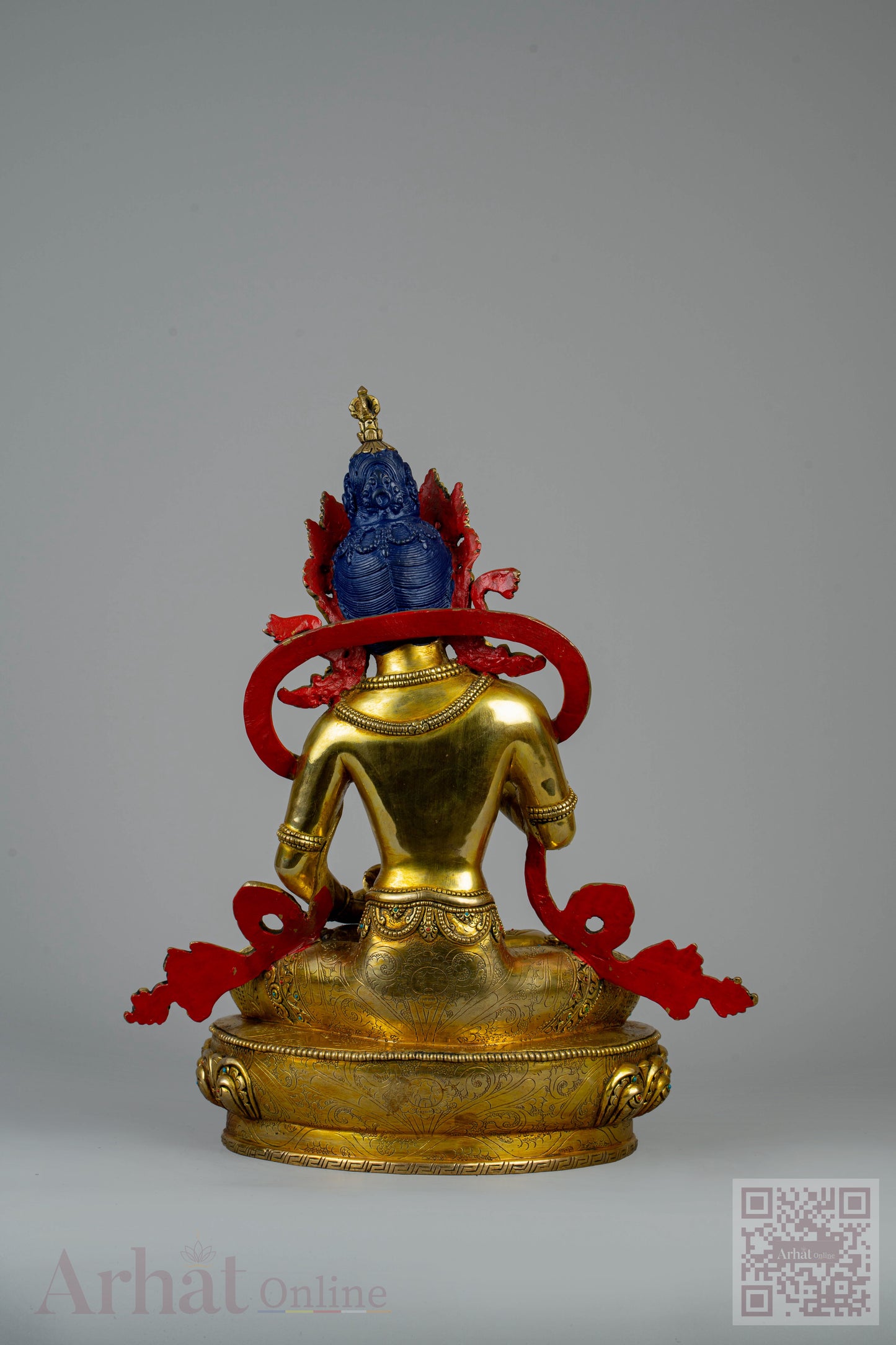
Vajrasattva — The Boddhisattva of Purity
Vajrasattva is the embodiment of the purity of all the Buddhas. Known as Dorje Sempa in Tibetan, he is the brave and heroic one, working for the welfare of others with courage. Vajrasattva stands out among deities, embodying a unique and profound compassion that makes him wonderfully accessible to everyone. Unlike traditional figures, such as Samantabhadra, who represent cosmic wisdom, Vajrasattva radiates warmth and understanding, inviting all who seek him into his embrace.
With a body white as crystal, peaceful in expression, Vajrasattva holds the vajra in his right hand and the bell in his left, seated upon a moon disc lotus seat. He is adorned with the thirteen peaceful ornaments and wears five silken garments, glowing with the splendour of the five wisdoms.
His hundred-syllable mantra is famed for its power to purify obscurations and cleanse negative karma. The sacred chant is transformative, much like a healing medicine, possessing unmatched strength to swiftly eliminate karmic obscurations.

